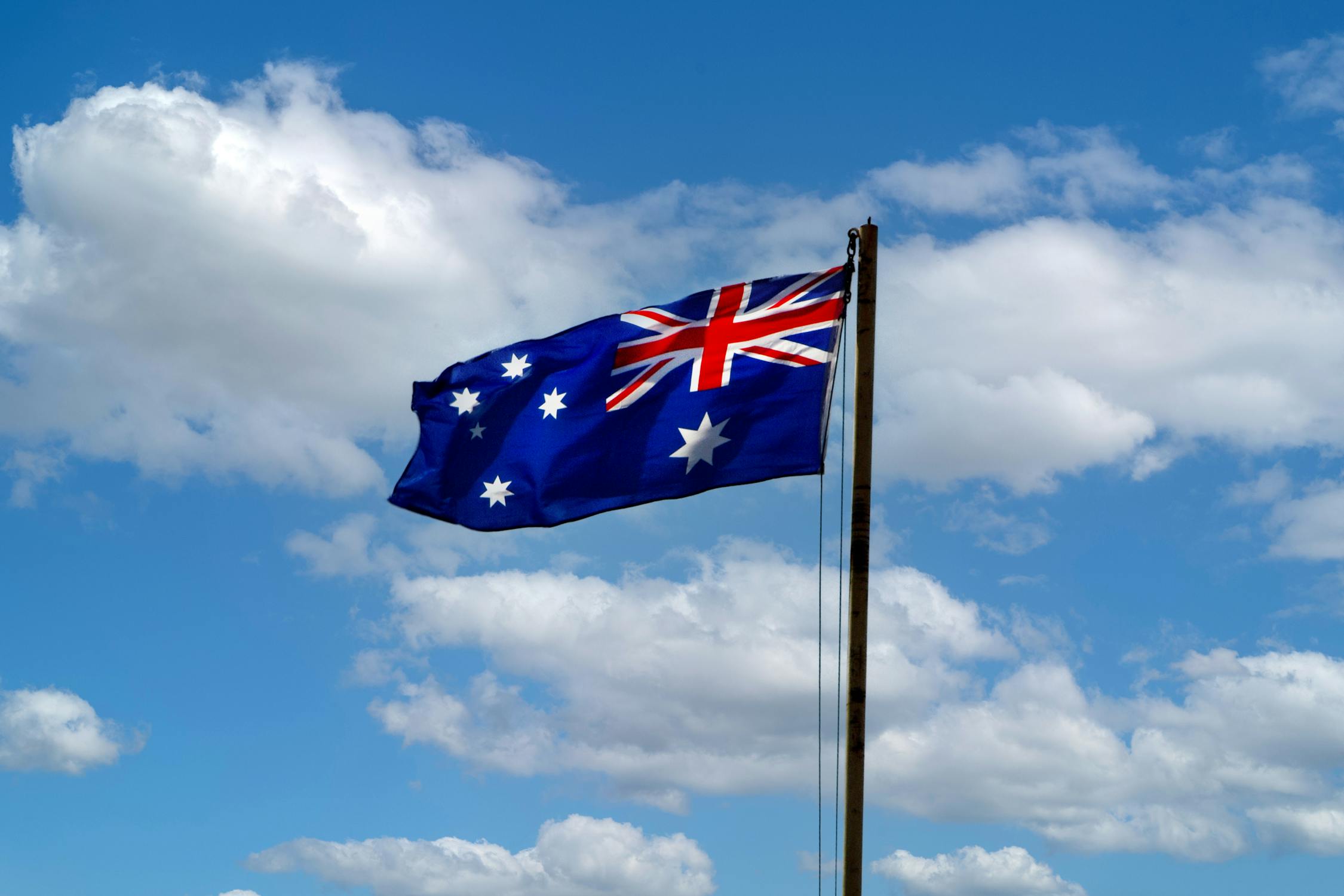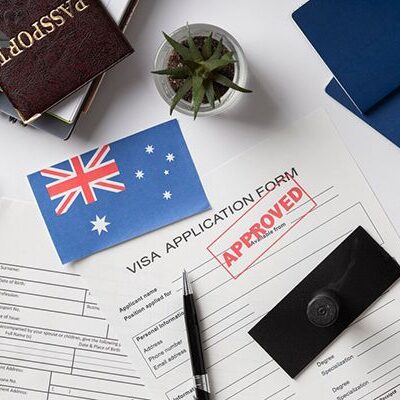Australia is a land of opportunities, offering a high standard of living, excellent healthcare, and a robust economy. With its diverse culture, stunning landscapes, and welcoming society, it’s no wonder many people dream of starting a new life there. However, migrating to Australia can seem complex due to its detailed immigration policies and procedures.
This comprehensive guide explores 10 effective pathways for migrating to Australia and provides insights into how you can navigate the process with ease. From skilled worker programs to family sponsorships and entrepreneurial opportunities, there’s a pathway for almost everyone.
Results
#1. Do you have a valid work permit or visa for Canada?
#2. What is your current employment status?
#3. What is your highest level of education?
#4. Are you willing to relocate to any province in Canada?
#5. Which field are you looking for a job in?
#6. How many years of experience do you have in your field?
1. Skilled Independent Visa (Subclass 189)
The Skilled Independent Visa (Subclass 189) is one of the most popular and flexible pathways for skilled workers looking to migrate to Australia. This visa is part of Australia’s points-based migration system and is designed for individuals with skills in demand on the country’s Skilled Occupation List (SOL).
Key Requirements:
- Age: You must be under 45 years of age.
- Points Test: Score a minimum of 65 points based on factors like age, education, work experience, and English proficiency.
- Occupation: Your occupation must be listed on the relevant SOL.
Why It’s Popular:
- No employer or state sponsorship is required, offering greater flexibility.
- Provides permanent residency, allowing you to live, work, and study anywhere in Australia.
- Ideal for skilled workers seeking independence in choosing where to settle.
2. Skilled Nominated Visa (Subclass 190)
The Skilled Nominated Visa (Subclass 190) is another points-tested visa but requires nomination by an Australian state or territory. It’s an excellent option for individuals whose skills align with specific regional needs.
Key Requirements:
- Meet the points test criteria (minimum of 65 points).
- Receive a nomination from a state or territory government.
- Commit to living and working in the nominating state for at least two years.
Benefits:
- Permanent residency status.
- Additional points awarded for state nomination, increasing your chances of selection.
- Access to regional job markets with high demand for specific skills.
3. Employer-Sponsored Visa
If you have a job offer from an Australian employer, an employer-sponsored visa could be your ticket to living and working in Australia. Common options include the Temporary Skill Shortage Visa (Subclass 482) and the Employer Nomination Scheme Visa (Subclass 186).
Key Requirements:
- Sponsorship by an eligible Australian employer.
- Relevant qualifications and work experience for the nominated position.
- English language proficiency (usually IELTS, TOEFL, or PTE).
Why It’s Beneficial:
- Streamlined process for individuals with in-demand skills.
- Pathway to permanent residency through employer nomination (Subclass 186).
- Access to jobs in sectors facing labor shortages, such as healthcare, IT, and construction.
4. Regional Skilled Migration Visa (Subclass 491)
Australia actively promotes migration to regional areas through the Regional Skilled Migration Visa (Subclass 491). This visa allows skilled workers and their families to live and work in designated regional areas for up to five years.
Key Features:
- Points are awarded for regional sponsorship, making it easier to meet eligibility requirements.
- Offers a pathway to permanent residency after three years of living and working in the region.
Why It’s Ideal:
- Regional areas often have lower living costs and offer a high quality of life.
- Encourages population growth and economic development outside major cities like Sydney and Melbourne.
5. Business and Investment Visa
Entrepreneurs, business owners, and investors can explore Australia through the Business Innovation and Investment Visa (Subclass 188). This pathway is tailored for individuals who can contribute to the Australian economy through business activities or investments.
Key Requirements:
- Meet minimum investment thresholds or demonstrate a successful business track record.
- Choose from streams like Business Innovation, Investor, or Significant Investor.
- Commit to managing or establishing a business in Australia.
Benefits:
- Opportunities to expand your business in a thriving economy.
- Potential for permanent residency through the Business Innovation and Investment Visa (Subclass 888).
6. Student Visa (Subclass 500)
The Student Visa (Subclass 500) is a popular choice for individuals seeking to study in Australia while exploring long-term migration options.
Key Features:
- Study at Australian educational institutions, including universities and vocational schools.
- Work part-time during your studies (up to 48 hours per fortnight).
- Eligibility for a Post-Study Work Visa after graduation, offering up to four years of work rights.
Long-Term Benefits:
- Gain Australian qualifications, which are highly valued in the local job market.
- Build work experience that enhances your eligibility for skilled migration pathways.
7. Partner Visa
If you are in a committed relationship with an Australian citizen, permanent resident, or eligible New Zealand citizen, the Partner Visa allows you to live together in Australia.
Key Features:
- Available to married, de facto, and same-sex couples.
- Two stages: a temporary visa leading to permanent residency.
- Evidence of a genuine and ongoing relationship is required.
Why It’s a Great Option:
- Offers a direct pathway to permanent residency.
- Allows couples to reunite and build their lives together in Australia.
8. Working Holiday Visa (Subclass 417 and 462)
The Working Holiday Visa is perfect for young travelers (aged 18-35) from eligible countries who want to explore Australia while earning an income.
Submit Your Applications
Key Features:
- Valid for up to 12 months, with options for a second and third year by completing regional or agricultural work.
- Flexibility to work and travel, offering a balanced lifestyle.
Benefits:
- Great for short-term migration or trying out life in Australia.
- Opportunities to transition to other visas if you find long-term employment.
9. Global Talent Visa (Subclass 858)
The Global Talent Independent (GTI) Program targets exceptional individuals in industries like technology, healthcare, and engineering.
Eligibility:
- Demonstrate exceptional achievements and international recognition in your field.
- Be nominated by a relevant Australian organization or individual.
Why Choose This Visa?
- Fast-tracked processing and no points test requirements.
- Permanent residency upon approval.
Pro Tip:
Highlight significant achievements, such as patents, publications, or awards, in your application.
10. Humanitarian and Refugee Visas
Australia has long been recognized for its commitment to offering a safe haven for individuals fleeing persecution, violence, or hardship. Through its Refugee and Humanitarian Program, the country provides pathways for those in dire need of protection and support. This program is a testament to Australia’s values of compassion, inclusivity, and a fair go for all, making it a vital component of the nation’s immigration framework.
What Are Humanitarian and Refugee Visas?
Humanitarian and refugee visas are designed to support individuals and families who face significant risks in their home countries due to factors such as:
- War and conflict.
- Political persecution.
- Religious or ethnic discrimination.
- Human rights violations.
These visas not only provide safety and security but also enable applicants to start a new life in Australia with access to resources and opportunities for integration into Australian society.
Eligibility and Application Criteria
To qualify for a humanitarian or refugee visa, applicants must meet stringent criteria established by the United Nations Refugee Convention and Australian immigration authorities. Key eligibility factors include:
- Fleeing Persecution or Hardship:
Applicants must demonstrate that they face significant risks in their home country, including violence, discrimination, or other forms of oppression. - United Nations Refugee Status:
In many cases, applicants are referred by the United Nations High Commissioner for Refugees (UNHCR). This referral confirms the individual’s status as a refugee under international law. - Special Humanitarian Program (SHP):
Applicants may qualify under the SHP if they are outside their home country and have a proposer (such as an Australian citizen, permanent resident, or eligible organization) willing to support their application. - Community Sponsorship:
Community sponsorship programs allow local organizations, groups, and individuals to sponsor refugees, offering financial and emotional support during their resettlement.
Visa Streams Under the Humanitarian and Refugee Program
Australia’s Refugee and Humanitarian Program offers several visa categories to accommodate different circumstances:
- Offshore Resettlement Visas:
- These visas are for individuals outside Australia who cannot return to their home country due to well-founded fears of persecution.
- Common offshore visa subclasses include:
- Refugee Visa (Subclass 200): For individuals identified by the UNHCR as needing resettlement.
- In-Country Special Humanitarian Visa (Subclass 201): For those who remain in their home country but face immediate danger.
- Emergency Rescue Visa (Subclass 203): For urgent cases requiring immediate relocation.
- Women at Risk Visa (Subclass 204): Specifically for women and their dependents facing severe threats in their home countries.
- Onshore Protection Visas (Subclass 866):
- These visas are for individuals who arrive in Australia and seek asylum. Applicants must prove their need for protection under the Refugee Convention.
Community Sponsorship Programs
Community sponsorship initiatives play a crucial role in Australia’s humanitarian efforts, enabling local communities to directly support refugees. These programs provide:
- Financial backing for resettlement expenses, such as housing and healthcare.
- Assistance with integration, including English language classes, employment services, and cultural orientation.
- Emotional and social support, fostering a sense of belonging in the community.
Programs like the Community Refugee Integration and Settlement Pilot (CRISP) are designed to increase Australia’s capacity for resettling refugees while enhancing community participation.
Benefits of the Humanitarian and Refugee Program
- Safety and Security:
- Refugees gain protection from threats in their home countries, allowing them to live without fear of persecution.
- Pathway to Permanent Residency:
- Many humanitarian visas provide a direct route to permanent residency in Australia, granting access to healthcare, education, and employment rights.
- Family Reunification:
- The program allows refugees to reunite with family members, providing emotional stability and support for those who have been separated.
- Access to Resources:
- Refugees benefit from settlement services, including language training, job readiness programs, and mental health support.
- Contribution to Australian Society:
- Refugees bring diverse skills, experiences, and cultural perspectives that enrich Australian communities and strengthen the economy.
Challenges and Support for Refugees
- Adjustment to a New Environment:
Refugees often face cultural, social, and linguistic barriers when resettling in Australia. Programs like Adult Migrant English Program (AMEP) and community centers offer crucial support during this transition. - Employment Opportunities:
While many refugees bring valuable skills, they may encounter difficulties in finding work due to language barriers or a lack of recognition of foreign qualifications. Tailored employment programs help bridge this gap. - Mental Health Support:
Refugees often experience trauma due to their circumstances. Australia provides counseling and psychological services to aid in their recovery and integration.
Why This Pathway Matters
The humanitarian and refugee program is more than a visa category—it is a lifeline for those in desperate need of safety and a chance to rebuild their lives. By offering resettlement opportunities, Australia upholds its commitment to human rights and provides hope to thousands of individuals and families each year.
For applicants, this visa offers not just protection but also the promise of a fresh start in one of the world’s most welcoming countries. For Australia, the program fosters inclusivity and strengthens communities by embracing diverse perspectives and experiences.
Steps to Streamline the Migration Process
Migrating to Australia can seem daunting, but breaking the process into manageable steps can significantly reduce stress and improve your chances of success. Careful planning, thorough research, and professional assistance are key to making your migration journey as smooth as possible. Below is an expanded guide to streamlining the process:
1. Research and Choose the Right Visa
The first and most critical step is identifying the visa category that best aligns with your skills, qualifications, and migration goals. Australia offers a wide range of visa options, each tailored to specific circumstances, such as skilled workers, students, entrepreneurs, family members, and humanitarian applicants.
How to Research Effectively:
- Understand Your Goals: Are you moving for work, education, business, or family reunification? Define your priorities.
- Explore Visa Categories: Visit the official Australian Department of Home Affairs website to review visa options and eligibility criteria. Key categories include:
- Skilled visas (Subclass 189, 190, and 491).
- Employer-sponsored visas (Subclass 482 and 186).
- Family and partner visas.
- Student visas (Subclass 500).
- Consider Long-Term Goals: If permanent residency or citizenship is your ultimate goal, prioritize visas that offer direct or indirect pathways to these statuses.
Tips:
- Attend webinars or information sessions hosted by migration agencies to stay updated on policy changes.
- Join online forums and communities where migrants share their experiences and insights.
2. Assess Your Eligibility
Once you’ve chosen a visa type, the next step is to determine whether you meet its requirements. Different visas have varying eligibility criteria, such as age limits, skills assessments, English proficiency, and financial capabilities.
How to Assess Your Eligibility:
- SkillSelect System: For points-based visas like Subclass 189 and 190, use Australia’s SkillSelect platform to calculate your points. Points are awarded based on:
- Age (maximum points for applicants aged 25-32).
- Educational qualifications.
- Work experience in a nominated occupation.
- English language proficiency.
- Regional sponsorship or partner skills (if applicable).
- Skills Assessment: Obtain a skills assessment from the relevant assessing authority for your occupation. This step is mandatory for many skilled visas.
- English Proficiency Tests: Take an approved English language test such as IELTS, TOEFL, or PTE Academic to demonstrate your language skills.
Consult an Expert:
If you’re unsure about meeting the criteria, consider consulting a registered migration agent for a detailed assessment and personalized advice.
3. Prepare Documentation
Comprehensive documentation is a cornerstone of a successful visa application. Missing or incomplete documents can lead to delays or rejections. Start gathering the required materials early to avoid last-minute stress.
Commonly Required Documents:
- Personal Identification: Valid passport, birth certificate, and national ID (if applicable).
- Education Records: Academic transcripts, diplomas, and certificates.
- Work Experience: Detailed employment references, contracts, and pay slips.
- Skills Assessment: Official report from the relevant authority verifying your qualifications and experience.
- English Test Results: Official score report from an approved test provider.
- Health and Character Checks: Police clearance certificates and medical examinations to meet Australian health and character requirements.
Tips:
- Organize documents into clear categories and keep digital and physical copies for backup.
- Check for expiration dates on passports and certifications.
- Ensure translations for non-English documents are certified by an approved translator.
4. Submit an Expression of Interest (EOI)
For points-based visas, submitting an Expression of Interest (EOI) through SkillSelect is a critical step. The EOI indicates your interest in migrating to Australia and provides details about your skills, qualifications, and points score.
Steps to Submit an EOI:
- Create an Account on SkillSelect: Access the SkillSelect portal and register your details.
- Complete the EOI: Fill in accurate information about your skills, work experience, education, and other relevant details.
- Nominate an Occupation: Select an occupation from the Skilled Occupation List (SOL) that matches your qualifications.
- Submit the EOI: Once submitted, your EOI will be stored in the SkillSelect database and considered by employers, states, or territories for sponsorship.
What Happens Next?
- If your EOI is selected, you will receive an Invitation to Apply (ITA) for the relevant visa.
- Invitations are issued based on your points score and ranking compared to other applicants.
Tips:
- Update your EOI regularly if your circumstances change (e.g., new qualifications or work experience).
- Aim to maximize your points by improving your English proficiency or obtaining additional certifications.
5. Seek Professional Help
Navigating Australia’s migration system can be complex, especially for first-time applicants. Hiring a registered migration agent can save time, reduce stress, and improve your chances of success.
Benefits of Professional Assistance:
- Expert Advice: Migration agents are well-versed in Australian immigration laws and can provide tailored guidance.
- Document Preparation: They ensure your application is complete and meets all requirements.
- Updates on Policy Changes: Agents stay informed about changes to immigration policies and can adjust your application strategy accordingly.
- Representation: In case of complications, migration agents can communicate with the Department of Home Affairs on your behalf.
How to Choose a Migration Agent:
- Verify their registration with the Office of the Migration Agents Registration Authority (OMARA).
- Check reviews and testimonials from previous clients.
- Discuss fees and services upfront to avoid surprises.
Alternatives:
If you prefer to manage the process independently, utilize resources like government websites, migration forums, and free online tools to guide your application.
FAQs on Migrating to Australia
1. How long does the Australian migration process take?
The timeline for migrating to Australia depends on the visa category you apply for and your individual circumstances. Here’s an overview of the processing times for popular visa types:
- Skilled Migration Visas (Subclass 189, 190, 491): These visas generally take 6–12 months to process from the time of submission. Factors such as demand for your occupation, points score, and the completeness of your application can influence the timeline.
- Partner Visas (Subclass 820/801): Partner visa applications typically take longer, with processing times ranging from 18 months to 2 years. The temporary visa is usually granted first, followed by the permanent visa after a waiting period.
- Employer-Sponsored Visas (Subclass 482, 186): Processing times for these visas can range from 2–6 months, depending on the complexity of the application and the employer’s sponsorship status.
- Student Visas (Subclass 500): Applications are processed quickly, often within 1–3 months.
- Global Talent Visa (Subclass 858): This streamlined visa often takes 1–3 months, making it one of the fastest options for highly skilled professionals.
- Humanitarian and Refugee Visas: Processing times vary significantly, depending on the urgency of the case and the circumstances of the applicant, often taking several months to a few years.
Factors Affecting Processing Times:
- Completeness and accuracy of your application.
- Demand for your occupation or visa category.
- Delays in obtaining necessary documents, such as police checks or medical exams.
Pro Tip: Submitting a complete and error-free application can significantly reduce delays. Using the services of a migration agent can also streamline the process.
2. What is the points test?
The points test is a scoring system used to assess eligibility for certain skilled visas, such as the Skilled Independent Visa (Subclass 189) and the Skilled Nominated Visa (Subclass 190).
How It Works:
Applicants must score a minimum of 65 points to qualify. Points are awarded based on:
- Age: Younger applicants (25–32 years) receive the highest points (30 points).
- English Proficiency: Higher scores in tests like IELTS or PTE can earn up to 20 points.
- Work Experience: Points are awarded for skilled work experience both in and outside Australia.
- Education: Qualifications such as a bachelor’s or master’s degree can earn up to 20 points.
- Regional Sponsorship: Additional points are awarded if nominated by a state or for studying in regional Australia.
Why It Matters:
The points test helps rank applicants, with those scoring higher receiving invitations to apply faster. Improving your points through additional qualifications or work experience can enhance your chances of selection.
3. Can I migrate without a job offer?
Yes, Australia offers several visa pathways that don’t require employer sponsorship or a job offer. These include:
- Skilled Independent Visa (Subclass 189): A points-based visa for skilled workers with occupations on the Medium and Long-term Strategic Skills List (MLTSSL).
- Global Talent Visa (Subclass 858): Designed for highly skilled professionals with global recognition in fields such as technology, healthcare, and engineering.
- Regional Skilled Visa (Subclass 491): This visa allows you to live and work in regional areas, with sponsorship from a state or territory rather than an employer.
These pathways allow individuals to independently migrate to Australia based on their skills, qualifications, and experience, making them ideal for professionals who want flexibility in choosing where to live and work.
4. Do I need to take an English test?
Yes, most visa categories require applicants to demonstrate English language proficiency. Approved tests include:
- IELTS (International English Language Testing System): One of the most widely recognized tests.
- TOEFL (Test of English as a Foreign Language): Commonly used for academic and migration purposes.
- PTE (Pearson Test of English): A computer-based test with quick results.
- OET (Occupational English Test): Tailored for healthcare professionals.
Required Proficiency Levels:
- Competent English: Minimum requirement for most skilled visas (e.g., IELTS score of 6 in each band).
- Proficient English: Higher scores can earn additional points in the points test (e.g., IELTS score of 7 or above in each band).
- Superior English: The highest level of proficiency, earning maximum points (e.g., IELTS score of 8 or above in each band).
Exemptions may apply for individuals from English-speaking countries or those who have completed tertiary education in English.
5. Is it possible to bring my family?
Yes, many visa categories allow applicants to include family members in their application. This ensures that your spouse, children, and sometimes even dependent relatives can migrate with you.
Who Can Be Included:
- Spouse/Partner: Married or de facto partners can be included. Proof of the relationship, such as joint financial accounts or shared living arrangements, is required.
- Children: Dependent children under 18 are eligible. Adult children may qualify if they are financially dependent due to disability or full-time study.
- Parents and Other Relatives: Some family visas allow for the sponsorship of parents or other dependent relatives.
Benefits for Family Members:
- Family members included in the application receive the same visa benefits, such as work and study rights.
- Access to healthcare services under Australia’s Medicare program.
6. Can I transition from a temporary visa to permanent residency?
Yes, many temporary visas offer clear pathways to permanent residency, making them an excellent option for individuals looking to test the waters before committing to a permanent move.
Common Transition Pathways:
- Student Visa to Skilled Migration:
- After completing studies in Australia, students can apply for the Temporary Graduate Visa (Subclass 485), which allows them to gain work experience.
- With relevant Australian qualifications and experience, they can then apply for skilled visas like Subclass 189 or 190.
- Employer-Sponsored Visas:
- Temporary workers on the Subclass 482 (TSS Visa) can transition to permanent residency through the Employer Nomination Scheme (Subclass 186) after meeting work experience requirements.
- Regional Skilled Migration Visa (Subclass 491):
- After living and working in a regional area for three years, applicants can apply for the Skilled Regional Permanent Visa (Subclass 191).
- Provisional Business and Investment Visas:
- Applicants on Subclass 188 can transition to permanent residency through Subclass 888 after meeting business or investment benchmarks.
Conclusion
Migrating to Australia is an exciting opportunity, offering the chance to start fresh in a country renowned for its high quality of life, stunning natural landscapes, and vibrant multicultural communities. While the process may initially seem complex and overwhelming, breaking it down into clear, actionable steps can make it much more approachable. With the right knowledge, thorough preparation, and strategic planning, you can navigate the migration journey with confidence and ease.
Australia’s immigration system is designed to cater to a wide range of individuals, from skilled workers looking to advance their careers to entrepreneurs seeking to invest in a thriving economy, students pursuing world-class education, and families wanting to reunite with loved ones. By exploring the diverse pathways available and aligning your skills and goals with the appropriate visa category, you can find the right option to suit your unique circumstances.
Why Australia?
The allure of Australia lies in its abundant opportunities and enviable lifestyle. As a country that consistently ranks high on global happiness and liveability indexes, Australia offers:
- Economic Stability: A robust economy with opportunities across diverse sectors, including healthcare, technology, construction, and education.
- World-Class Education: Some of the best universities and research institutions in the world, attracting students from all corners of the globe.
- High Standards of Living: Access to excellent healthcare, quality housing, and a clean, safe environment.
- Cultural Diversity: A welcoming society that celebrates multiculturalism, making it easier for newcomers to integrate and feel at home.
Migrating to Australia is more than a move—it’s a chance to enhance your quality of life and embrace new opportunities for personal and professional growth.
Overcoming Challenges
Every migration journey has its challenges, whether it’s navigating the visa process, gathering the required documentation, or adapting to a new culture. However, these challenges can be overcome with:
- Proper Research: Understanding visa requirements, eligibility criteria, and application procedures reduces uncertainties and ensures your application is on the right track.
- Professional Guidance: Consulting with a registered migration agent can simplify the process, provide clarity on complex requirements, and increase your chances of success.
- Community Support: Joining migrant communities and forums can help you connect with people who have gone through similar experiences, offering invaluable advice and encouragement.
Preparation is key, and investing time in understanding the process upfront can save you from unnecessary delays and stress later.
Your Pathway to Success
No matter your background—whether you’re a skilled professional, entrepreneur, student, or family member—Australia has a pathway to help you achieve your goals. From the flexibility of skilled migration visas to the support offered through partner and family reunification programs, there’s a visa category designed for nearly every scenario.
Key Steps to Remember:
- Assess Your Options: Explore the visa pathways that align with your qualifications, goals, and circumstances.
- Be Proactive: Start gathering the required documentation and meeting eligibility criteria early.
- Stay Informed: Keep up with changes in immigration policies and programs that might affect your application.
- Seek Expert Advice: A registered migration agent can guide you through the process, helping you avoid common pitfalls.
A New Beginning
Migrating to Australia is more than just moving to a new country—it’s the beginning of an exciting chapter filled with opportunities for personal and professional growth. It’s a chance to contribute your skills and talents to a thriving nation while enjoying the benefits of a world-class lifestyle.
Take the first step today by exploring your visa options, assessing your eligibility, and reaching out for guidance where needed. With the right preparation and determination, you can turn your dream of living in Australia into a reality.
Embrace the opportunities waiting for you in the Land Down Under. Your future in Australia is within reach—start your journey today!






I like to work in your country
Work in this country and I want to settle down to marry in the country please I’m ready to come to this country please accept my condolence
Hi please i need money to feet my family
I will love to work and get married in Canada 🇨🇦
I will happy if my dream comes through
I love to be in outside country
I wanna make money
I am en interested to Marriage and work in Canada or Australia my from Nigerai Ondo state a to welder and fabrication work find my work for my thanks
I would like to work in Canada
None